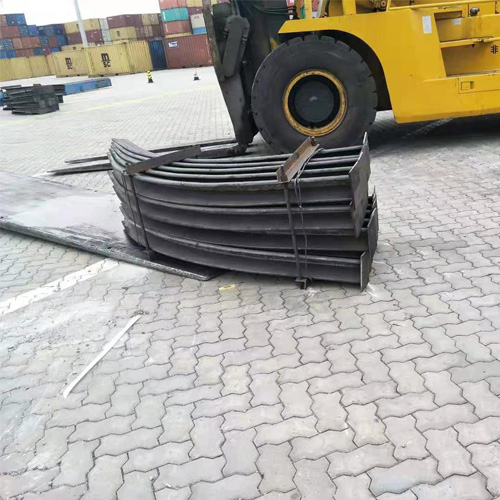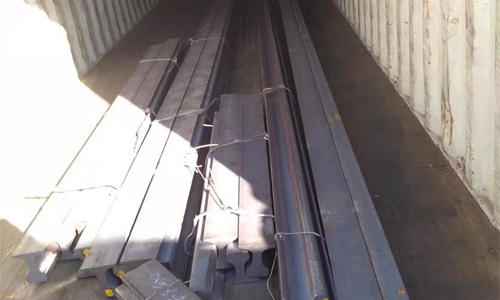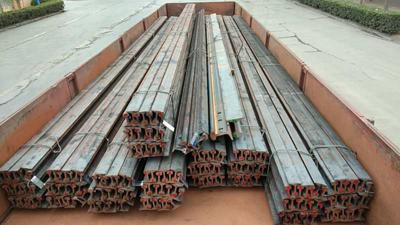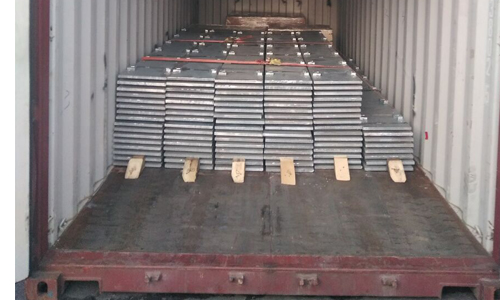A65 steel rail processing according to your requirements
The A65 steel rail, standardized under DIN 536, represents a critical component in heavy-duty crane systems and industrial applications. With a mass of 43.10 kg/m, it is engineered for superior load-bearing capacity, making it ideal for overhead cranes, gantry systems, and port handling equipment. Manufactured primarily from high-strength 50Mn manganese steel, the A65 rail exhibits exceptional mechanical properties, including a yield strength exceeding 450 MPa, tensile strength of 800-950 MPa, and excellent weldability with low deformation under high axle loads. Its fracture resistance and hardness ensure longevity in harsh environments, reducing maintenance costs and enhancing operational efficiency. The rail's profile features a wide base for stability, a low center of gravity to counter lateral forces, and a thick web that resists bending and wear.
Processing A65 steel rails begins with rigorous material selection and quality control to meet ISO 9001 standards. Raw materials undergo batch testing for chemical composition—typically 0.45-0.54% carbon, 0.70-1.00% manganese, and trace elements for enhanced toughness—and mechanical properties. Suppliers must provide certificates verifying compliance, ensuring no defects like inclusions or segregation compromise integrity. Vacuum degassing during steelmaking reduces hydrogen content to below 0.5 ppm, minimizing risks of hydrogen-induced cracking. Blooms are cast via continuous casting in Basic Oxygen Steelmaking (BOS) vessels, followed by controlled reheating to 1,200-1,250°C.
The core manufacturing process involves hot rolling, where heated blooms are passed through a series of rolling stands to form the precise I-beam profile. Finishing temperatures are maintained at 850-900°C to achieve the required head width (62.71 mm for similar profiles) and flange dimensions, ensuring smooth wheel guidance. Post-rolling, rails are hot-sawn to standard lengths of 6-12 meters, stamped for traceability, and subjected to accelerated cooling—either air quenching or enhanced water mist—to refine grain structure and boost hardness to 260-300 HB on the running surface. This heat treatment, including surface quenching, imparts superior wear resistance, allowing the rail to withstand dynamic loads up to 100 tons per axle without excessive plastic deformation.
Secondary processing tailors the rails to specific project requirements, emphasizing precision and durability. Common operations include 45-degree miter cuts for seamless corner transitions in curved tracks, performed via CNC plasma or abrasive sawing to prevent stress concentrations. Drilling creates bolt holes (typically 22-26 mm diameter) for clip attachments, using carbide tools to maintain positional accuracy within 0.5 mm. Milling refines end faces and profiles for perfect joint fits, while special contouring adapts rails to non-standard geometries in confined industrial spaces. For corrosion-prone environments, galvanizing applies a zinc coating (80-100 μm thick) through hot-dip immersion, extending service life by 20-30 years. Painting with epoxy primers adds an aesthetic and protective layer, often in RAL colors for site identification.
Welding is pivotal for joint assembly, employing aluminothermic (thermite) techniques for field connections. This exothermic process fuses rails at 2,000°C, creating monolithic sections with minimal heat-affected zones. Pre-weld preparation involves grinding to remove scale, followed by alignment using hydraulic clamps. Post-weld grinding restores surface smoothness, ensuring a 1-2 mm gap tolerance. Quality checks, including ultrasonic testing for internal flaws and hardness profiling, confirm joint integrity equivalent to parent metal.
Installation demands meticulous planning to leverage the A65's properties. Rails are laid on steel beams or concrete foundations with elastomer pads to dampen vibrations, secured by weldable down clips and bolted upper clips with rubber noses for load distribution. Laser alignment tools ensure straightness within 1 mm over 10 meters, preventing derailments. Fishplates and high-strength bolts (M20-M24, grade 8.8) connect sections, while end stops and conductor bars complete the system.
Ongoing maintenance involves periodic inspections using magnetic particle testing for surface cracks and profilometry for wear gauging. Reprofiling via mobile grinding machines restores head geometry every 1-2 years, depending on traffic volume. Environmental considerations, such as recyclable steel content (over 95%), align with sustainable practices, allowing end-of-life rails to be re-rolled without property loss.
In summary, A65 steel rail processing integrates advanced metallurgy, precision fabrication, and robust quality assurance to deliver a product that excels in demanding applications. By optimizing strength, weldability, and customization, it minimizes downtime and maximizes safety, underpinning efficient industrial operations worldwide.













